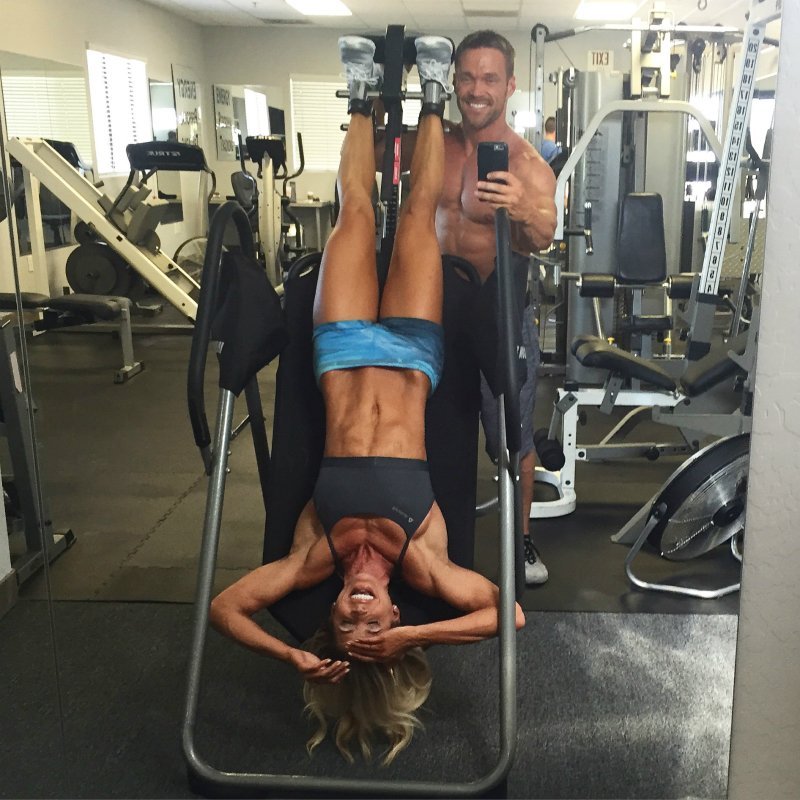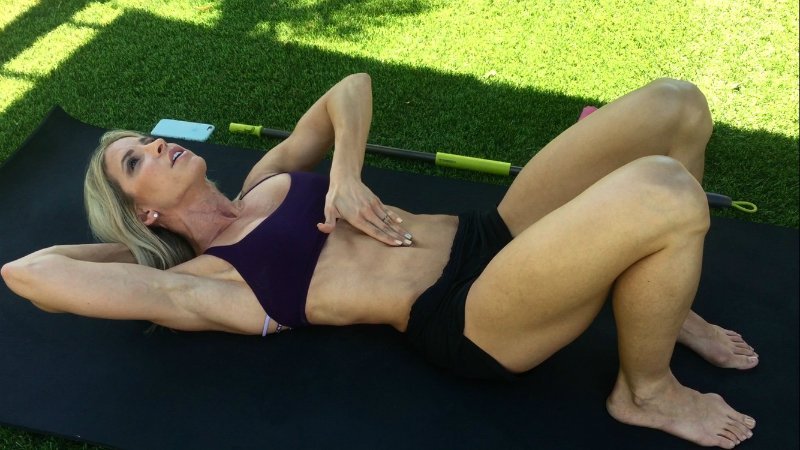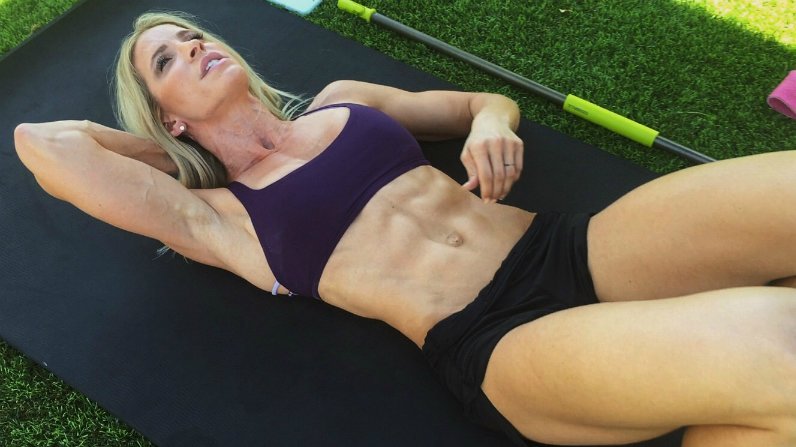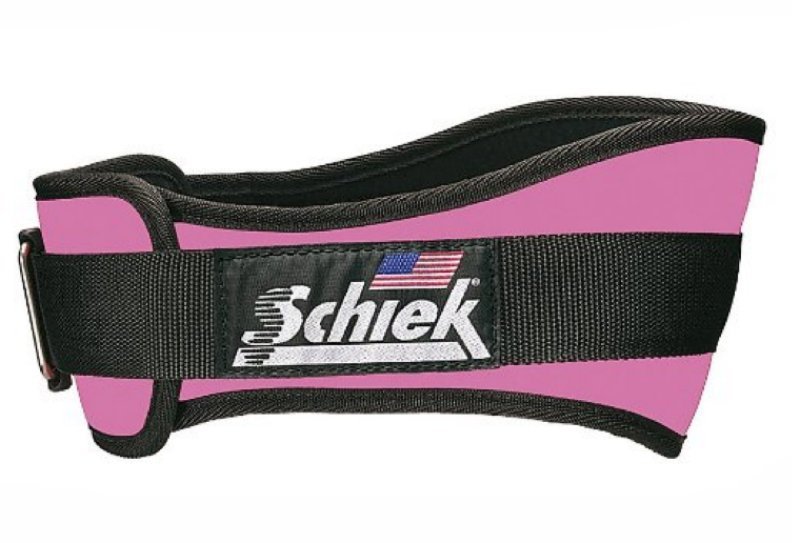Ok, here it is! Girl to girl, we need to discuss something I THINK is more common than I’ve ever believed! I’m getting a little personal and a little science-y on you today to talk about diastasis recti. Diastasis rect-who? Rect-ME! (Ok, stop).
I’m going to warn you up front. There is SO much to cover in this post—it’s a little long. If you wanna’ get straight to the meat (or the exercises you can do to fix your diastasis recti), scroll down. If you wanna’ learn more and figure out if you have this condition, keep reading.
Let me get you up to speed. Diastasis recti generally happens during pregnancy when the two large parallel bands of abdominal muscles separate due to the expanding uterus. Some women’s ab muscles go back to normal after the baby is born, and some do not…mine never have, and chances are yours haven’t either—which is why you are here.
The good news is that the diastasis caused by pregnancy can be corrected with exercises and stretches designed to optimize deep core muscular function. So ladies, don’t worry—your body wants to function right, and it will. We just need to wake up the right core muscles and teach them what to do! But let’s not get ahead of ourselves. Saving that for later.
Now how this happens and why it is worse for some women, no one is 100% sure. But we can hypothesize. It’s been said to be hereditary, but it may also be caused by working out your abs too soon after a baby is born, or even doing the wrong exercises WHILE pregnant. While I didn’t workout during ALL of my pregnancies (just the last 2), I personally feel like working my abs hard during prego worsened my condition. But that’s just my opinion.
Crazy fact, I didn’t even notice my ab separation until after Cash was born!! Yes, 3 kids later. I mean, I knew it was there, but I didn’t realize it was a medical condition. Embarrassingly enough, I always just thought I had definition down the center of my abs! Ha! Nope…wishful thinking. Just diastasis. Once I realized this odd look my midsection had wasn’t normal, nor was it normal for me to be able to literally stick my hand inside of my abs and touch my insides with just skin separating, I knew I had to do something about it. If you’d like a visual, just check out the pic below. This was posted on social media a couple of weeks back, and I got an overwhelming response from women (you!) that suffer from the same condition…
From a medical standpoint, until recently, I had a little over a 3-finger sized gap between my abs that was physically unprotected. Like I said, intestines…right below my skin. And during certain ab exercises, my insides would actually protrude through my abs, forming a weird point. Disgusting, I know. And it’s even scarier to think how vulnerable my vital organs were. If this went untreated, I could suffer from a major intestinal hernia, and given my level of activity (and types of heavy lifting), chances of this happening are higher than most. I mean, I already have an obvious umbilical hernia (my dramatic outtie belly button) so I figure I am more prone than most…
Extensive research on the topic taught me a few things…one of them being there are a handful of factors that make a woman more susceptible to diastasis recti:
- Having more than one child/pregnancy
- Having pregnancies close together
- Being?over the age of 35
- Having big babies
- Having multiple births
I know…some of you are looking at this ist realizing you’ve been double—or even quadruple—whammied! (I?m raising my hand to a couple). Don?t beat yourself up about what you cannot change because diastasis recti is very common—about 67% of all postpartum women have it. So you (and I) are in good company.
If you’re not sure if you are among the lucky few who steered clear of this pregnancy consequence, here’s an easy way to check:
- Lie on your back with your knees bent, soles of your feet close to your booty.
- Place one hand behind your neck and the other hand on your abdomen with your fingertips flat at your belly button, fingers facing downward.
- Gently push your fingertips into your abdomen while rolling your upper body off of the floor, chin towards the ceiling.
- Feel for a separation between those two ab muscles. Experts say that a 2-2.5 finger or more spread signals diastasis recti.
Now, let’s talk about our options moving forward. We can go the immediate and potentially easy (but expensive) route with surgery. BUT, surgery is not always recommended if you are still in your childbearing years…I mean think about it, one more baby, and you’ll pop those abs right back apart! As well, there is no guarantee that surgery will be 100% effective. (SIDE NOTE…Research on this topic started once Chris told me NO to this option because he wants more babies! Another topic for another day…but…).
So for me, at-home exercises and remedies are the way to go. Anytime I can avoid going under the knife, I will. And worst case? If the exercises don’t work, surgery as an option is always going to be there.
Before we go farther—a very important disclaimer: The following “fixes” are all based on my experience and my research, so please check with your doc BEFORE doing anything for your diastasis recti since each case is different. Okay, here goes:
Over this past year, my training protocol has changed as I have transitioned from CrossFit-style workouts to body building. Along with the training change-up, I changed the way I worked my abs too, focusing on decreasing (actually eliminating) the typical ab exercises and increasing the deep-core muscle exercises. I am happy to report that over this year, my abdominal muscle separation has decreased dramatically to less than 2 fingers!! But it still isn’t quite where I need it to be to consider myself healed.
The proof is in the pudding for me: A lot of this boils down to doing the RIGHT exercises. I realize that for so long I was doing what I intuitively thought would work (swing ups, sit ups, V ups, knees to bar, etc), but in reality, these move were working against me by ONLY working my Rectus Abdominus. The REAL muscles that needed working are known as the Transversus Abdominus and Lumbar Multifidus. These are the the most neglected of the ab muscles, but also happen to be arguably the most important. They lie beneath the Rectus Abdominus, supporting posture, controlling breathing during heavy lifts, and supporting the back. These are the muscles elite athletes work to add explosive power to training and are also the muscles we mamas need to work to relieve back pain, create a tighter midsection, AND improve our diastasis recti.
Some at-home exercises you can do to focus on these important muscles are below. I’ve also recorded a demonstration video for you (at the bottom of the post) so you can SEE how to perform these moves right and hear my instructions. Make sure that when you do these moves, you focus and move slowly—keeping the mind body connection. In other words, don’t just go through the moves. You’ll notice that breathing is a KEY component to all of these movements: Deep inhales, and exhale when you activate the muscles.
-
- Drawing In Exercise: Now technically every single move listed below requires you to “draw in,” so I figured I would do a little explaining. Drawing in is NOT sucking in (which uses the outer muscles). Drawing in is done by allowing those inner muscles to pull your abdomen deep inside toward your spine. Draw in from the lower region of your abs. Drawing in is something you can do in sets for as long as you can hold (work up to 60 seconds at a time), or it’s something you can simply do as you walk around your house. Believe it or not, your posture will improve big time with this! This can be done standing, sitting, lying down…you name it. Just DRAW IN!
- Vacuuming: No…not vacuuming your carpet (although I guess technically you can vacuum ON your carpet). I’m talking about the core exercise known by this name. I know I’ve talked about this before, but I’m going to talk about it again. Easily explained, simply stand up straight, inhale deeply, followed by an exhale. Once all of the air is deflated from your lungs, draw your belly button in and up toward your spine. HOLD (as tough as it is) for as long as you can. I aim for 30 seconds, but if holding your breath that long isn’t doable, simply keep the clock running and keep your belly button in and tight as you slowly breathe for the remainder of the 30 seconds. Try for 5-10 reps a day.
- Broomstick Rotations: With a dowel or a broomstick behind your neck, perform a vacuum, then when all air is exhaled and you are holding your breath with your abs squeezed, slowly rotate from side to side until you cannot hold your breath any longer. Breathe. Repeat 5-10 times.
- Abduction with Core Activation: Lie on your back with a resistance band around your knees. Exhale, engage your core and pelvic floor and pull your knees apart. Relax, inhale, and repeat for 10 reps. Be sure to keep your spine neutral and don’t press your lower back into the ground.
- Heel Slide: Lie on your back with both knees bent, feet flat. Exhale as you engage your core and pelvic floor, and slide one heel slowly along the ground until your leg is straight. Inhale and relax, then engage your core, exhale, and draw that heel back. Do 5 reps on each leg.
Once again, scroll to the bottom for my step-by-step video.
Now when it comes to traditional training and weight lifting, consider wearing a weight belt. It has worked WONDERS for me. Not only will a weight belt support your core while lifting heavy loads, but more importantly, it will act as a cue/reminder to activate and draw in with your core while lifting. Otherwise, we are naturally prone to distending our bellies during heavy lifting, only worsening our diastasis recti. This is the one I use…
So ladies, however you choose to take care of your diastasis recti, whether DIY exercises or surgery, know you are making the choice that is right for you! It’s a medical condition and not just a vain aesthetic concern, so if surgery is what you choose, then surgery it is! But if exercises are your method of healing, please keep me up to speed on your progress.
And in the meantime, have those babies, LOVE those babies, and appreciate every consequence of having such perfect little miracles! #BattleWounds
And finally…the demonstration vid…;)
Xoxo,
Heidi
Related reading:
Ask Heidi Anything: Carb Cycling While Prego?
My 1st Post Ruby Workout
My Pregnancy Workout: The Nasty 9s
My 5 Gym (and Home Gym) Must-Haves






262 Responses
Hi! I have two boys, 4 and 5.5. Is it still ?fixable? at this point, so long after my boys? When I stand up I feel like I still look pregnant unless I suck in, and I?m a smaller frame (119 and 5?6?), and when I lay down you can see the skin (what looks like) falling down the center of my gap. It?s so discouraging and sad! I feel like I?ve lost hope to lose this weird pooch, despite everything I try.
Hi Brittany: Yes, I believe this is fixable, but it would be best to talk to your healthcare team about what is best for you to do. Fixing the gap can be different for each woman, and we ‘d hate to recommend something that wouldn’t be best for you. And please don’t lose hope – you can do this! 🙂
Thank you so much for sharing this and informing others who are going through these challenges with some very valuable and helpful information! And for still being active in replying to comments all this time later! You are a rock star!
I had a spontaneous, very unexpected triplet pregnancy 2yrs ago. I lead a very active lifestyle and my gap has managed to close pretty much on its own, mostly in the last year while the kids have been more willing to let me exercise, haha. But the connective tissue is still shot! I get that protruding dome that is reminiscent of some alien film whenever I utilize my core incorrectly. Unfortunately, my skin was not particularly elastic, either, so I wonder if my genetics are simply such that this connective tissue will never snap back. I wondered if these exercises have helped your body to negate that dome effect entirely, or, similar to mine, have they simply closed to gap so that the dome is much smaller? I guess your skin looks pretty snappy so maybe your connective tissue is more snappy as well. Haha. But this would be very hehelpful to me! Thank you!
Hi Alicia: And triplets? Yay! 🙂 These exercises can help different women in different ways since each case of DR can be a bit different. I’d chat with your healthcare team about what will be best for you. 🙂
Hi. I’m 10 month PP..feeling ready to get back into my body training. How many times a week can the core/abs workkout be done? How many rest days between workouts for lower versus upper body?
Hi Deanna: For any resistance workouts, you’ll want to wait 48 hours before working the same muscle groups again. You can do these vacuum twists every day. Hope that helps! 🙂
I have a 1 finger width gap. I am 12 weeks post partum and lost all my baby weight by week 10 but still have a small round pooch on my stomach. I am wondering if this is still left over baby weight and maybe weight has just ditributed differently? ( I had a flat tummy before pregnancy and gained 30lbs during pregnancy) or if this pooch is from the diastasis recti?
Hi Katie: Congratulations on your new baby! Have you discussed your DR with your healthcare team? And only being 12 weeks postpartum, your body is still recovering and it can take several months for you to feel like you’re back to “normal.” Be patient with yourself, follow a healthy meal plan, work out as you can, and you’ll get there! 🙂
I love this article! It?s my favorite.
IG handle cassie_g_
Favorite blog post for this mama of 3. Working on closing my gap a bit.
veronicalynn84
What about if you have this and the horrible hanging stomach? Do you think this will help? you have a pretty toned stomach already , my daughter is already 4 I have lost 40 lbs im skinny and I still have a tummy
Hi Merranda: These exercises can help tighten and strengthen your core. As for loose skin from weight loss, each person’s skin can react differently to weight loss, and hopefully yours will tighten up. And congratulations on losing 40 lbs – that’s amazing!!!
I’ve read conflicting articles about planks or kick boxing. Are they bad or good for correcting DR? I’m 2.5 years post partum from my 3rd child. 2 C-sections, then VBAC. All big babies. I’d like to get back to a workout program I had but it included planks (side and traditional), burpees, etc. I’m also looking at a Kickboxing type HIIT program.
Hi Heather: With any degree of DR, it’s best to chat with your healthcare team about what would be best for you. Each case, and the treatment, can be different, so we’d hate to recommend something that wouldn’t be good for you. 🙂
Hi – I am pregnant with my 4th baby, and have trained through all of my pregnancies. About 8 months ago I began using the Powell?s Transform app program, and I?m currently on my 2nd round of cross training (advanced.) I just do what the app tells me to do and call it good, but I have also never done super targeted core workouts while pregnant. Are there any core exercises contained in the transform sequence that wouldn?t be advised as they might contribute to a Diastasis? Thanks!
Hi Leighanna: Congratulations on your pregnancy! We recommend you discuss any exercise program and any exercises – especially core/ab exercises – with your healthcare team while pregnant and then follow their recommendations. We wish you all the best! 🙂
Hi there! Question: do you recommend staying away from all other ab exercises until these are mastered and the separation is fully healed? Mine is moderate, juuust 2 inches apart. I don’t have any symptoms, but definitely still look pregnant a year later 😉 So I’m wondering if I should avoid doing traditional ab exercises and focus on these first. Thank you!
Oops, I meant 2 fingers, not two inches 😉
Hi Ana: I’d definitely talk with your healthcare team about this and then follow their recommendations since what is good for one woman might be the totally wrong thing for another. We wish you all the best! 🙂
Thank you for this! I am 10 months postpartum with my first and had a diastasis recti starting at 19 weeks pregnant. I was doing all the wrong workouts. Since being diagnosed I worked hard not to make it worse during pregnancy and bringing it back in after my son was born. I went from a 3 finger gap to a 1-1.5 finger gap currently. I sometimes have the tiniest cone, but not very noticeable. I haven’t been able to close my gap completely. When did you start doing all ab exercises again or did you never go back to normal crunches/planks/push ups?
Hi Mary: I know that Heidi does do these exercises, but I’d talk to your doctor about when it would be appropriate for you to do them. And congratulations on going from 3 fingers to 1.5 fingers – that’s so exciting! 🙂